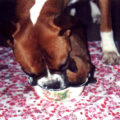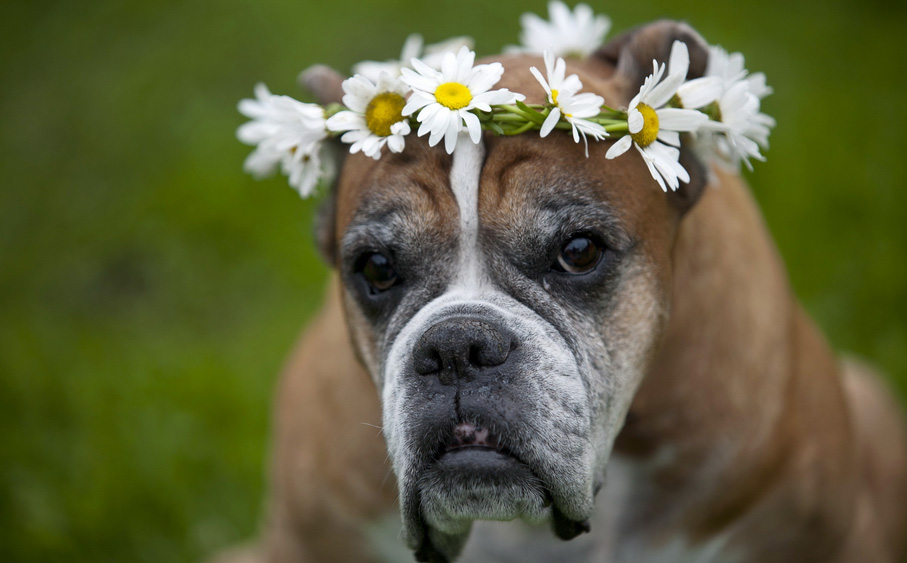Nutrition of the Old Dog
Nutrition of the Old Dog
An old dog is much more sensitive than a young dog to the amount of human contact each day. It will seek out its owner’s company, and mealtimes become much more important to it.
Be that as it may, the dog’s food should compensate for its increased susceptibility due to aging, and should help it keep its health as long as possible and live out its full life expectancy. Obviously, feeding errors at any age will accelerate the aging process: Food for old dogs should take the following rules into account.
– The overall amount fed should be reduced by ten to twenty percent, to prevent the risk of obesity due to reduced physical activity.
– The protein concentration of the food (at least twenty-five percent) should be increased slightly, or at least maintained, for optimal nutritional balance and to help the dog fight stress and keep up its immunity. The reduction in protein content for older dogs recommended by some is very harmful and has no justification whatsoever as a preventive of chronic kidney failure.
– The dietary fiber content should be increased. This is necessary because fiber improves digestive health, guards against the frequent phenomenon of constipation, and allows the food’s energy content to be decreased without any reduction in the size of the meals.
– The amount of vitamins and trace minerals should be increased, particularly the antioxidant vitamins (vitamin E and, in this case, vitamin C) to help the cells fight oxidative membrane stress, the age-linked destruction of cell membranes.
For all of the reasons mentioned above, it is preferable to change the aging dog’s diet to a complete dry food (kibble or dehydrated broth) that is specially formulated for this type of dog. Naturally, it is possible to adapt the portion according to the type of food. A balanced daily ration of homemade food should include (per kg of food):
– Lean beef: 270 grams
– Liver: 80 grams
– Cooked rice: 400 grams
– Wheat bran: 160 grams
– Whole hard-boiled egg: 80 grams
– 1 teaspoon sunflower oil
– 1 teaspoon coconut butter
– 2 capsules fish oil
– Mineral and vitamin supplement.
Taking the dog’s size into account, as do some complete dry foods, is important for old dogs also. For example, proper kibble size will help the dog to eat at an age where its teeth are increasingly fragile; highly-digestible primary ingredients will prevent episodes of diarrhea; and a low phosphorus content will help the kidneys to continue functioning.
Because small-, medium-, and large-breed dogs do not age at the same rate, the nutritional program should be organized by age brackets, with foods adapted for “Adult 1” dogs (the dog is in full possession of all its faculties), “Adult 2” dogs (mature dogs) and “Senior” dogs (the dog is aging and its physical capacities are gradually declining).




